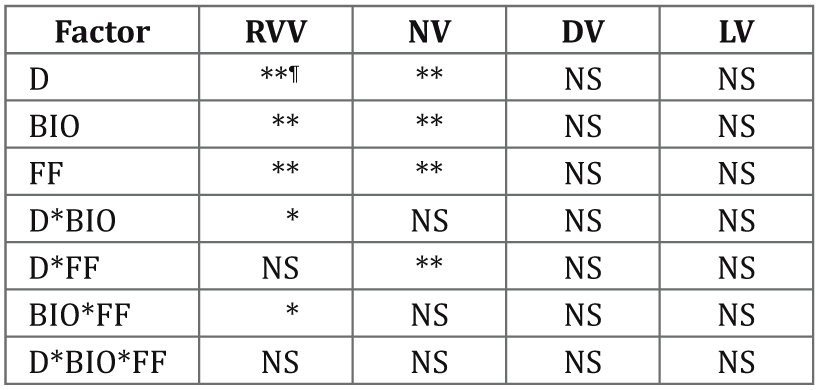Producción y calidad nutrimental de vaina del frijol chino, Vigna unguiculata (L.) Walp, en función de arreglo topológico y tipo de fertilización
Palabras clave:
Vigna unguiculata, biofertilización, espaldera viva de maíz, fertilización foliarResumen
El frijol chino (FC) se utiliza en alimentación humana y se cultiva en espaldera viva de maíz, pero, son escasos los estudios sobre arreglos topológicos adecuados. En este sistema, la biofertilización (BIO) y fertilización foliar (FF) podrían complementar la nutrición. En Huitzuco, Guerrero, México, durante el periodo lluvioso se sembró FC tipo guía en espaldera de maíz a 80 (D8) y 160 cm (D16) de distancia entre hileras (D), con y sin BIO (B y SB) y con y sin FF (F y SF), para determinar los efectos de D, BIO y FF sobre el rendimiento y calidad nutrimental de vainas. La emergencia del FC se presentó a los 6 días después de la siembra (dds), la floración a los 58 dds, el primer corte de vaina a los 70 dds y el último a los 110 dds. El mayor rendimiento de vaina se logró con D8-B-F (851 g m-2), seguido por D8-SB-F (758 g m-2) y D16-B-F (657 g m-2), con los que se generó la más alta concentración de minerales (6,5%) y proteínas (28,1%), y la menor de carbohidratos solubles y fibras. El mayor rendimiento y calidad nutricional de vaina verde se obtuvo con D8-B-F.

Descargas
Publicado
Número
Sección
Licencia
Aquellos autores/as que tengan publicaciones con esta revista, aceptan las Políticas Editoriales.


